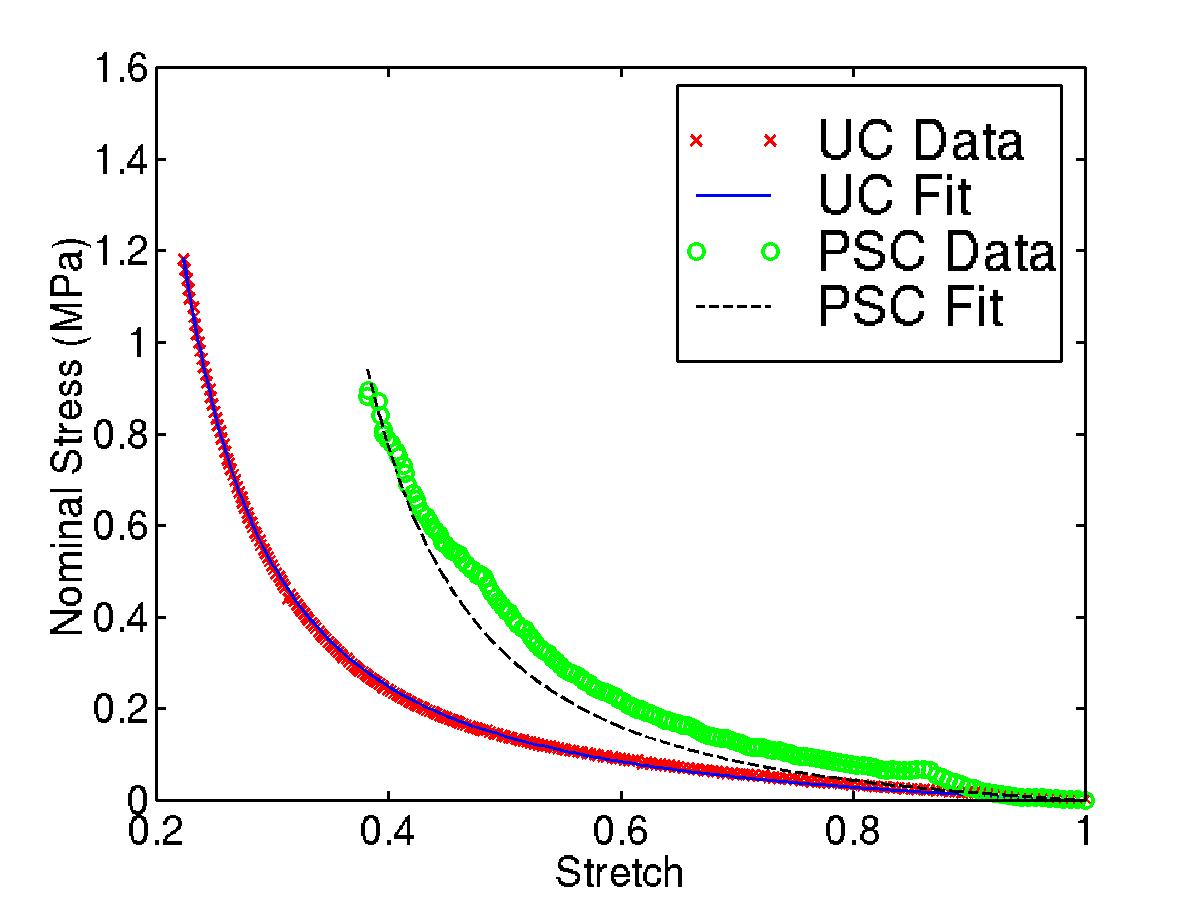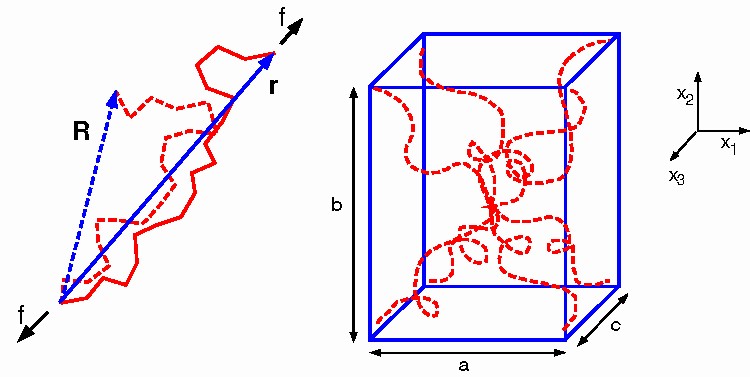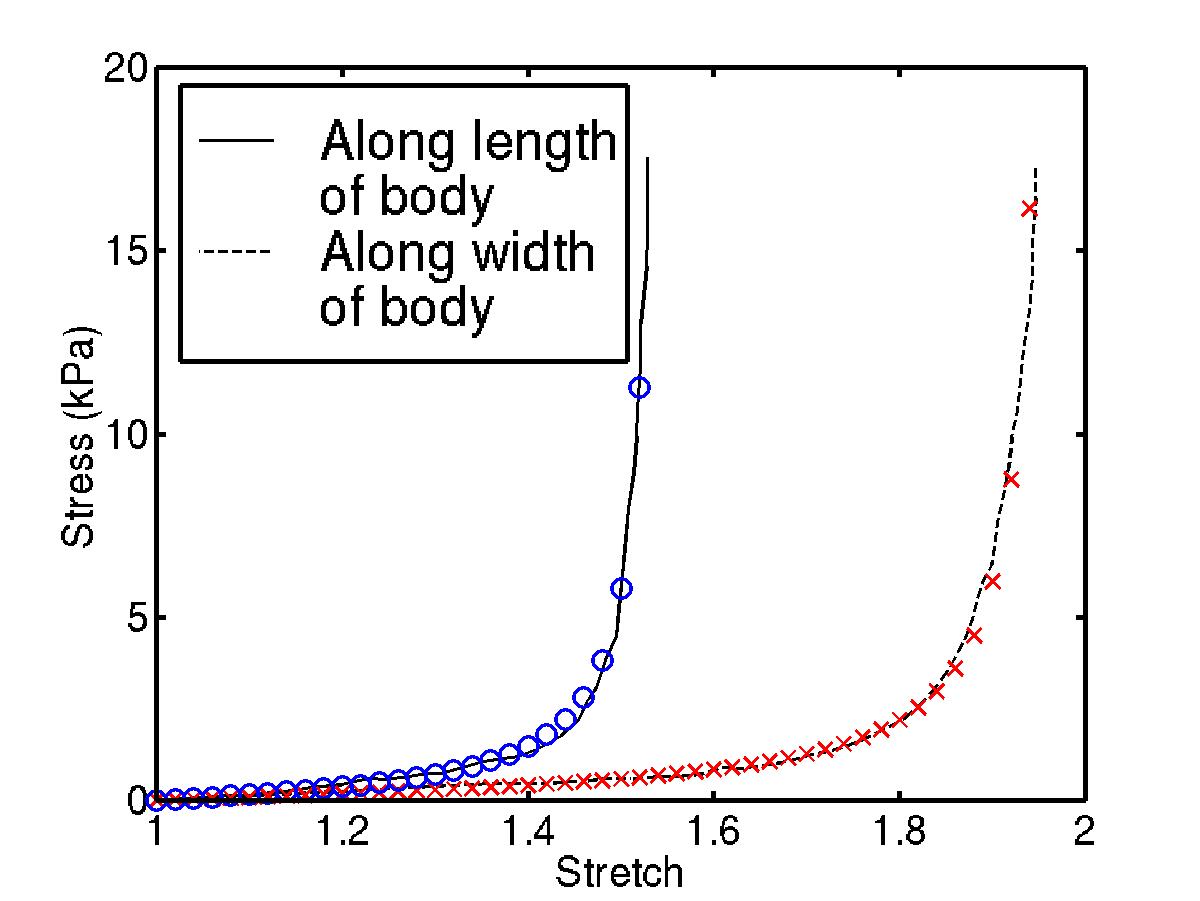Experimental investigation
In order to measure the constitutive behavior of soft tissues, both low strain rate and high strain rate testing methods can be used. For low strain rate tests, an MTS 810 servohydraulic test system with small (< 5 pound) load transducers is used. This system has been used to obtain uniaxial compression, plane strain compression, and hydrostatic compression data for a variety of elastomers that are used as fleshy substitutes in car crash dummies. Data from a typical test are shown in the figure below; uniaxial compression data and fits are denoted “UC” and plane strain compression data and fits are denoted “PSC”.

For high strain rate tests, a split Hopkinson pressure bar (SHPB) setup is used. A striker bar (also called a “bullet”) is fired at high velocity into an incident bar; the collision results in a compression wave travelling down the incident bar. The opposite end of the incident bar is in contact with the specimen, whose other end is in contact with a transmission bar. By comparing the compression waves in the incident and the transmission bar, the stresses and strains in the sample can be calculated.
Constitutive modeling
Many soft tissues, such as skin and heart, are heterogeneous materials. In the case of skin, the primary load-bearing component of the tissue is the interlaced collagen network in the dermis. For active tissues such as heart, the collagen network still bears a significant portion of the load during relaxation, but during the active phase when the muscles contract, most of the stress is carried by the muscle fibers themselves. Due to the complex structure of the collagen and muscle fiber networks, the constitutive response of these soft tissues is anisotropic and highly nonlinear.
We have developed a constitutive law for collagen-based soft tissues that is derived from the statistical mechanics of collagen fibers. In this treatment, each collagen fiber is considered to be a long-chain molecule that is composed of N rigid links each of length l. This view of a collagen fiber and the representative eight-chain anisotropic unit cell that is used to derive the constitutive law is given below.

The strain energy function for this law is given by:

is the inverse Langevin function. When applied to soft tissues, this constitutive law is characterized by only four parameters: the fiber density n, the fiber locking stretch N, and the aspect ratios ry = b/a and rz = c/a of the unit cell. Since soft tissue is nearly incompressible, the parameter B is very large. The ability of this constitutive law to model the anisotropic response of skin is shown in the figure below, using data from Lanir and Fung (1974).

Finite element simulations
Most in vivo measurements of the mechanical responses of soft tissue involve complicated geometries and loading scenarios. For example, a common tool used to obtain a metric of the mechanical state of skin is the extensometer, in which two tabs are glued to the skin of the subject and driven apart from each other. A load-displacement relationship is obtained from this test. To interpret results from such a test, the surrounding stress state of skin must be taken into account, as well as the three-dimensional nature of the test (this test is not comparable to an in vitro uniaxial tension test). The chain density and locking stretch which characterize the tissue for this test can only be obtained by performing a finite element simulation of the test. Thus, work is currently underway to incorporate the constitutive model presented above into finite element software.
